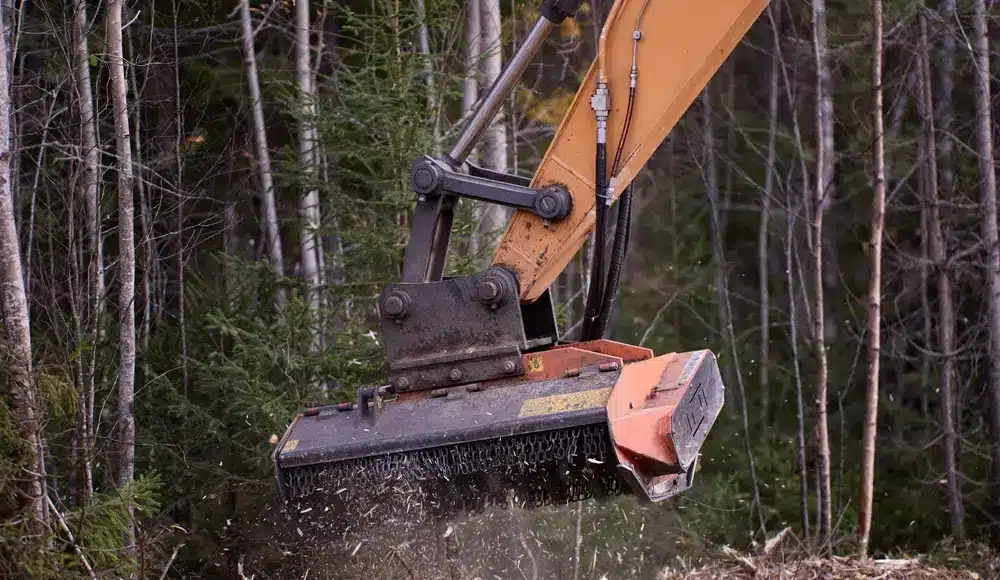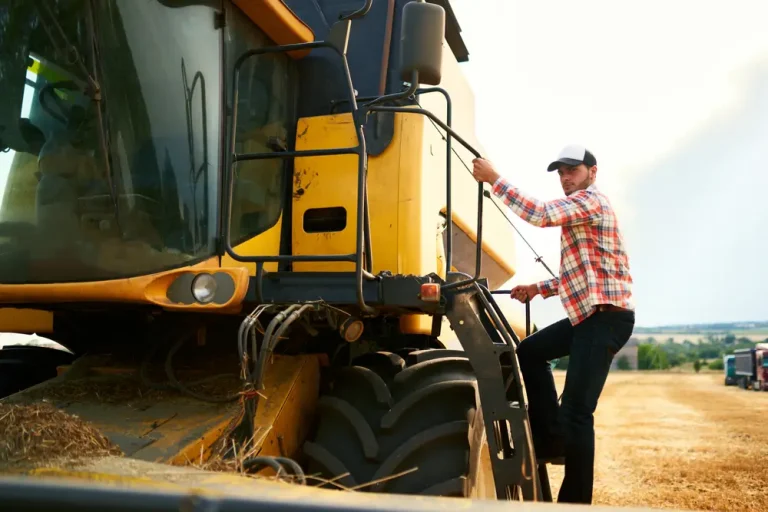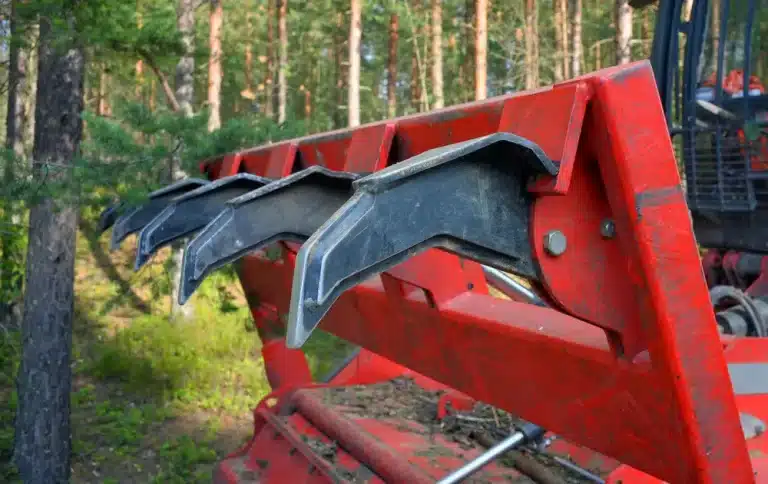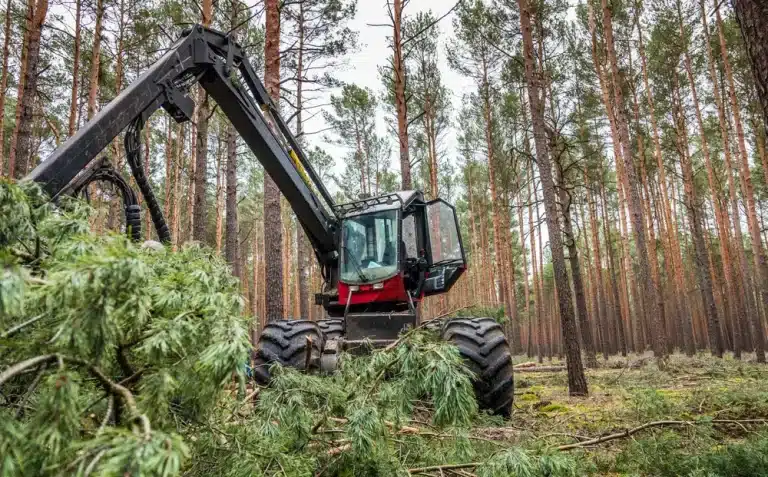Who knew that taming thick brush and invasive species in the colorful forests of Toulouse was simpler and more effective with a forestry mulcher on your hydraulic excavator! While many landowners and contractors can’t keep up with quick-growing vegetation, this dynamic duo introduces unprecedented versatility and working capacity to nearby land clearing jobs. See why opting for a forestry mulcher on your excavator is the wise decision for Toulouse’s distinct terrain.
What is a forestry mulcher for excavators?
A forestry mulcher for excavators is an attachment that mounts on the boom-arm of a hydraulic excavator, designed to pulverize trees, brush, and dense vegetation. It harnesses power from the excavator’s hydraulic system to spin rapidly, tear through resilient vegetation, and clear land in locations inaccessible to conventional machinery. It’s frequently deployed in rugged or sloping terrain, such as forests or hillsides, and aids in making room for construction or land management.
This type of mulcher is compatible with the majority of excavators ranging in weight from 2,700 to 8,200 kg. The attachment itself is heavy, typically between 295 and 450 kg, but that’s required for hard work. The teeth on the mulcher are sharp and durable, typically running 50–100 hours before needing to be sharpened or replaced. Not surprisingly, with that size, the cutting width is pretty wide between 71 and 122 cm so it can cover a lot of ground fast. The hydraulic flow required by it, 38 to 151 lpm, allows it to work with several excavator models.
Forestry mulchers come in three main types: deck, disc, and drum. Drum mulchers are best for thick brush and small trees, disc mulchers process big trees quickly, and deck mulchers take care of lighter brush. All utilize swinging blades or teeth frequently hard carbide-tipped to chop or grind vegetation. They rotate rapidly, normally from 1,500 to 3,000 rpm, shredding branches and tree trunks into mulch almost immediately.
These attachments transform a standard excavator into a versatile clearing machine, ideal for forestry, construction sites, or maintaining open land. They’re constructed rugged, with direct drive bearing housings, which means they endure in hard work for a long time.
Why use a mulcher with an excavator?

Pairing a mulcher to an excavator allows operators to clear dense brush and saplings quickly — and safely. Because you operate from a cab suspended above the ground, there’s less exposure to risk when addressing challenging or thick areas. This combination equipment is great for clearing brush, mulching green waste and even stump removal, a convenient option for land clearing and forestry applications.
Excavators have a good base on solid footing and can operate on terrain that is rough, sloping or even muddy. Other carriers such as tractors or loaders can bog down or roll on uneven sites, but excavators can reach out with boom arms. This allows operators to tackle work on slopes, ditches or near water, where ground conditions vary, without having to bring in additional equipment.
Mulcher with excavator reduces labor. Rather than having people with chainsaws or hand tools, the machine does the lion’s share. This method really accelerates large scale projects like clearing large tracts or preparing sites for construction. Others report they span 4 to 6 times the area of hand clearing or other machines, demonstrating the speed and scale increase.
This approach maintains minimal soil disturbance. Conventional clearing frequently implies pushing up roots or digging, which rips up the ground. Mulching crushes plants where they stand, leaving the soil and soil horizons relatively undisturbed. It’s better for the land and leaves less of a mess to clean up, so it’s more kind to local flora and fauna.
A few things to watch out for. Because mulching places stress on linkages and hydraulic components, not all excavators can accommodate a mulcher. The proper match varies based on your excavator’s weight and flow rate, with numerous mulchers suiting machines ranging from 2,700 to 8,200 kilograms. Others discover that a specialized mulching machine pays off in the long time, provided most of the work is mulching, not digging.
Key benefits
A forestry mulcher installed on a hydraulic excavator provides a clever, secure and economical solution for land clearing no matter where in the world. This combo holds true for the kind of work where you send crews to clear brush, prepare land or take on dense woods.
- Quicker turnaround on projects. Mulchers allow you to mulch trees and brush in place. No more hauling away piles of debris or even worse–burn piles. For instance, when thinning a forest or clearing a roadside, the mulcher cuts, shreds, and spreads mulch in one pass. This bypasses additional cleanup and accelerates work.
- Less dangerous for drivers. With a mulcher on an excavator, the operator remains in a reinforced cab throughout the process. When clearing steep slopes or dense brush, this configuration keeps individuals at a safe distance. No chainsaws or hand tools exposed in danger areas. That’s reasonable for employment with stringent safety regulations or in isolated locations.
- Access hard to reach areas. Mulcher-equipped excavators can tackle steep hills, riverbanks, or tight urban lots. The long arm allows you to clear brush over ditches, fences or rocks. In wet or rough ground, the machine’s reach and grip mean you can work where wheeled tools can’t go.
- Save money. Mini excavator with mulcher consumes significantly less fuel than big machines or traditional clearing equipment. Hard steel blades that last a long time even in heavy woods. Less breakdowns and less gas is less cost in the long run.
- Nimble and easy. Mulching heads accommodate a variety of excavators, ranging from 6,000 to 18,000 pounds. Choose cutting widths from 28″ to 48″ to fit the task. Most heads operate on a flow rate from 10 to 40 GPM, so they’re compatible with standard equipment. They accommodate small and large projects comfortably.
Mulcher types
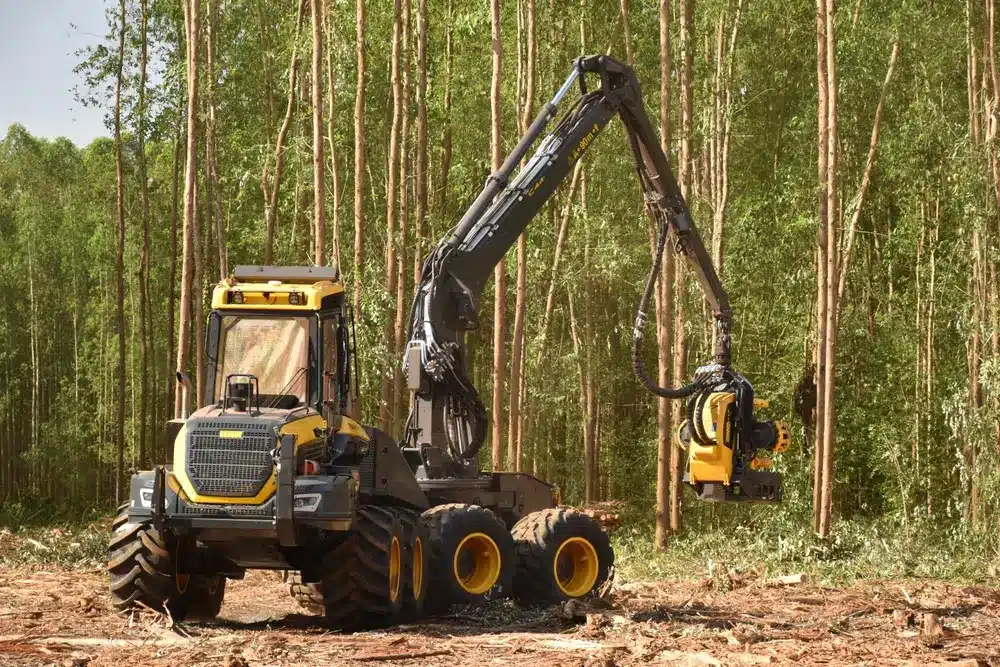
Forestry mulchers fit into three main groups: drum mulchers, disc mulchers, and deck mulchers. Each style has its own manner of cutting, shredding and distributing plant matter. Drum mulchers, known as fixed tooth mulchers, operate with a rotating drum equipped with teeth. These mulching teeth pulverize trees and brush up to 200 mm diameter. Drum mulchers are ideal for jobs that require consistent mulch and can span large terrain. They range in size from 1.3 meters, 1.5 meters or 1.8 meters wide, allowing you to tailor the implement to your land and workload requirements.
Disc mulchers utilize a heavy-duty steel disc that rotates and chops into trees and heavy brush. They’re great mulch, which keeps ground moist and prevents soil erosion. Disc mulchers typically perform better with larger stems and high-speed work. They fell trees quickly, but might not produce as uniform a finish as drum mulchers. Deck mulchers are infrequent but excellent for clearing grass or light brush on level terrain.
Hydraulic flow is key to selecting the appropriate type of mulcher. Drum mulchers generally require lower flows, beginning at 75 lpm, but perform optimally with 120–170 lpm. Disc mulchers, on the other hand, routinely require more, from 130–170 liters per minute, in order to maintain their velocity and cutting power. Just be sure to always check your excavator’s specs to select a mulcher that matches.
Specialized mulchers are built for tasks like:
- Stump grinding
- Brush and grass clearing
- Heavy tree felling
- Power line and roadside maintenance
- Wetland or marsh area clearing
| Mulcher Type | Key Features | Best Use |
| Drum | Even mulch, lower flow | Wide areas, fine finish |
| Disc | Fast, fine mulch | Thick stems, quick jobs |
| Deck | Flat, open areas | Light brush, grass |
Selection criteria
Selecting the best forestry mulcher for a hydraulic excavator begins by taking a close look at what your excavator can handle. ALWAYS verify the weight limit and the hydraulic power your machine outputs. The mulcher’s prime performance occurs when the hydraulic flow rests in the upper half of its rated range. Insufficient flow results in poor mulching and increased abrasion. If the mulcher is too heavy, it stresses the arm and can even result in the entire task becoming unsafe. Always match the mulcher size and power it requires to the specs of your excavator, not just the brand or what’s available.
Next is build quality. A strong frame with good welds and tough, wear-resistant steel makes the mulcher last longer. Reinforced corners and guards assist, particularly in rough terrain where rocks or stumps are typical. Check out hose routing, as well. Unless otherwise protected, hoses that protrude or sag are magnets for brush and debris. Torn hoses shut down jobs and lose $$$. Select a mulcher with quality hose guards and intelligent routing.
Consider what you’ll need the mulcher for. Forestry, utility lines or site prep all have different requirements. Drum mulchers perform well on big brush and trees, while disc mulchers tend to be speedier and more efficient for lighter jobs. Deck mulchers can mulch mixed ground and keep chips low to the earth. Each kind suits a different kind of project, so align tool with task.
Selecting wisely implies considering the full specifications, not simply the cost. Think about application, power, fit and build. Here’s a quick table to help:
| Criteria | What to Look For | Why It Matters |
| Hydraulic Capacity | Match flow/pressure range | Ensures strong, steady mulching |
| Weight Limit | Stay under arm’s rated load | Avoids machine strain or damage |
| Build Quality | Reinforced frames, tough steel | Lasts longer, less downtime |
| Hose Protection | Guarded, smart routing | Cuts risk of hose damage |
| Application Fit | Drum, disc, deck types | Suits the job and terrain |
